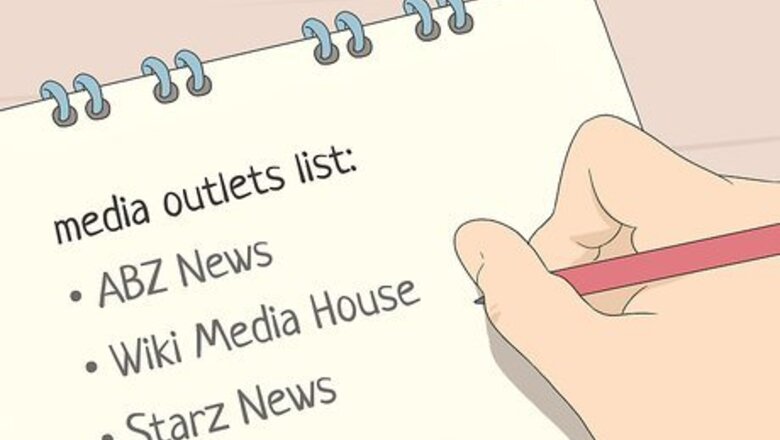
views
Collecting Stories to Analyze
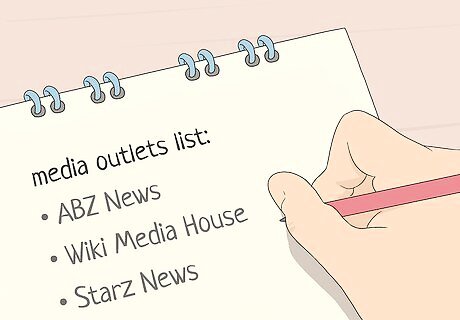
List all of the media outlets in your area. Include newspapers, news websites, radio stations, television news shows, and any other media outlets you want to include. Depending on the story you hope to share and its scope, you may also extend your search to include statewide and national media outlets. For example, you may include the local newspaper, radio station, web news sources, and possibly any major news sources in the nearest big city if you’re in a rural area or suburb. Alternatively, you might want to focus on national or worldwide news sources to analyze a larger company or subject.

Make a list of search terms based on your topic. Identify the key terms that will help you to gather articles pertaining to your topic. This will help to streamline your research by giving you terms that you can plug into each of the media channels you decide to investigate. For example, if you’re conducting a media analysis of the controversy over a major highway construction project in your city, then you might include terms like, “highway construction,” “highway controversy,” “construction budget concerns,” etc.

Collect news stories from research databases from the last 6 months. Use the key terms to find articles on your topic in databases, such as subscription resources like Lexis Nexis and Ebsco Host, or free resources like Google Scholar. Plan to go back about 6 months and aim to collect between 100-200 articles if you’re doing a professional media analysis. Make sure to include a variety of different types of media sources unless you’re hoping to examine a specific medium, such as TV, radio, or print news.Tip: If desired, you may expand your search to cover a longer period of time, such as 12 months. This may result in a more thorough study of the topic.

Separate the stories into categories and eliminate irrelevant data. The three main categories you’ll likely collect include opinion, news, and feature stories. Eliminate obituaries, calendar items, and any other extraneous items from the data you collect. Separating the data into categories can help you know what to expect when you start reading a story.
Analyzing the Stories

Read the articles and underline or take notes. This will make it easier for you to write about your findings. Use a pen or highlighter to note important information in print articles, or make a note of this information if you’re reading digital media or if you examine TV or radio sources. Some things to watch for as you review the media you’ve collected include: Buzzwords, which are terms that come up again and again across different media channels. Bias, which is using emotional appeals to convince readers of something even if the evidence is lacking. Similar portrayals of a story, such as portraying it in a positive or negative light across different media channels. Positioning of the story, such as whether it’s a front-page or prime-time news story.Tip: The length of the story may also help you to determine its importance. For example, if it's a short story that appears on one page, the news outlet may deem it less important than something that takes up multiple pages.

Answer questions about the articles you read. A major part of the analysis is asking questions and answering them based on the evidence you find in your sources. Some questions you might consider as you review the sources you’ve gathered include: How does the media frame this topic? Who are the spokespeople for the topic and how are they being represented? Are any voices noticeably absent from the articles on this subject? What topics are getting the most coverage within the category? What media outlets are covering this topic? Does coverage seem to peak or drop at certain times of the year?

Summarize what you have learned. After you have completed your media analysis, write a brief summary of what you have learned about how the media is covering your subject. Include your answers to all of the questions you asked about the data you collected. Note anything of special importance or that you’re still unsure about. For example, if you have noted that most news outlets portray your subject using a set of buzzwords and a similar level of bias, then you may describe and discuss these.
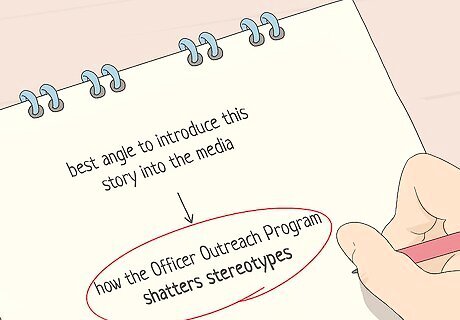
Identify ways this may help you to introduce your own story. A media analysis is a helpful way to determine how best to introduce a story into the media. Consider what you’ve learned and decide if there are any strategies that may help to get your story out to a broader audience or make it more appealing to readers. For example, if the sources you consulted all portray a public concern in a similar light, then you might want to adopt this method of framing your topic as well.
Structuring a Media Analysis Essay
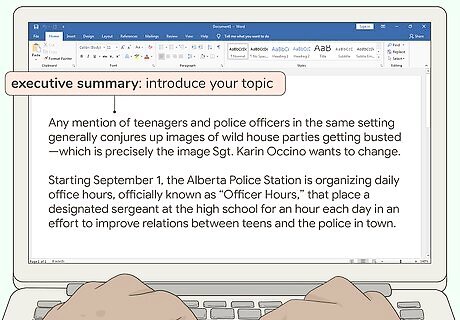
Compose the executive summary to introduce your analysis. The executive summary is where you introduce your topic, state your purpose, and give an overview of your findings. It’s essentially a preview of your media analysis. Provide any background information about your topic that readers may need to know, then identify why you chose to investigate this topic and explain what you discovered from your research in brief. For example, you might begin by saying that your topic is an upcoming election in your community and that you wanted to do a media analysis to determine how to introduce your own story on the topic. Then, you might conclude by saying what media channels have in common in their presentation of this topic.

Describe your methodology. This is the section where you describe your research process, such as the search terms you used, your sample size, the media outlets you sourced articles from, the time frame, and the databases you consulted. Be as detailed as possible when you describe your methodology. Tip: Make sure to clarify any special terms or details that your readers might not understand in this section as well.

Evaluate the topic to determine how the issue is being covered. Consider what your findings have revealed about how media outlets are covering your topic. This is a good place to respond to some of the questions you've asked and answered about your topic, such as: What aspects of the topic are being covered? What buzzwords do the media channels use? Do the media channels tend to show bias on the subject, and if so, how?
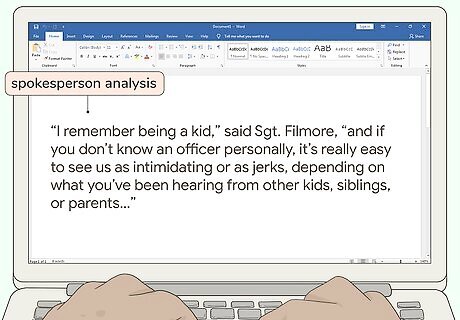
Provide the spokesperson analysis. Spokespeople include business leaders, professionals, advocates, public and government officials, members of the general public, and academics. Tally up the frequency with which each type of spokesperson appears in the articles you review and mention these numbers in this section of the media analysis. You may even consider making a chart to show which spokespeople are being quoted most and least often. This can help you to determine what types of spokespeople to include in your own article.

Transition to the framing analysis to identify archetypes. Reporters may rely on one or more archetypes to frame a story, which can help you to determine what might work best for your story. Identify any archetypes that are used in the stories you’ve reviewed and see what ones come up most and least often. For example, you might notice that the “hero takes a fall” archetype is used frequently for the articles in your topic area. This might mean that choosing this frame for your story could be beneficial.

Give readers your conclusions and recommendations. At the end of the media analysis, explain what the major findings were for the study and how this may be beneficial to your reader or organization. This may include detailed suggestions for how to frame a story, where to place it in a media channel, and who to quote in the story. Be as detailed as possible and cite specific examples from your study to support your recommendations. For example, if you recommend including a business professional, professor, and a member of the community in coverage of a story, cite the data you have collected that shows these spokespeople as the picks for stories on your topic.













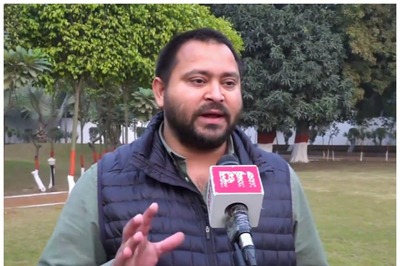






Comments
0 comment